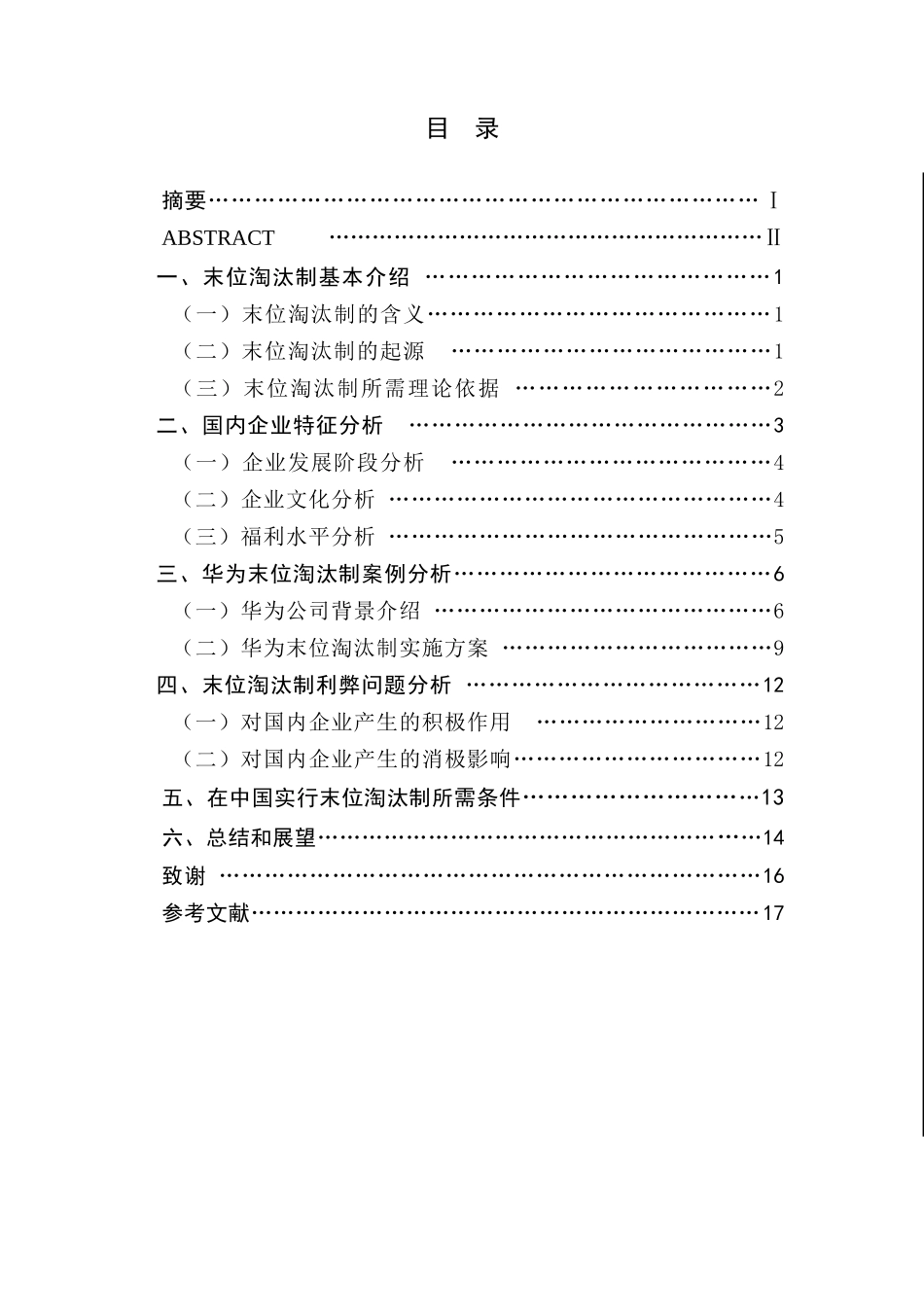目 录 摘要……………………………………………………………… ⅠABSTRACT ……………………………………………………Ⅱ一、末位淘汰制基本介绍 ………………………………………1(一)末位淘汰制的含义………………………………………1(二)末位淘汰制的起源 ……………………………………1(三)末位淘汰制所需理论依据 ……………………………2二、国内企业特征分析 …………………………………………3(一)企业发展阶段分析 ……………………………………4(二)企业文化分析 ……………………………………………4(三)福利水平分析 ……………………………………………5三、华为末位淘汰制案例分析……………………………………6(一)华为公司背景介绍 ………………………………………6(二)华为末位淘汰制实施方案 ………………………………9四、末位淘汰制利弊问题分析 …………………………………12(一)对国内企业产生的积极作用 …………………………12(二)对国内企业产生的消极影响……………………………12五、在中国实行末位淘汰制所需条件…………………………13六、总结和展望……………………………………………………14致谢 ………………………………………………………………16参考文献……………………………………………………………17摘 要 随着世界的融合以及信息化的发展,中国企业引进了许多国外的管理方法,末位淘汰制,作为激励手段的一种,也正逐渐被中国企业所认可及使用。然而,在大部分国内企业的运行过程中,末位淘汰制出现了“水土不服”的现象。员工在不断提高绩效的同时,却也显露出消极的一面。究竟是哪些环节的过失导致这一现象的产生?末位淘汰制是否该在国内继续?本文深度剖析这种制度带来的影响并结合华为公司的末位淘汰制案例,分析这种制度在中国的未来走向。关键词:末位淘汰制;国内企业;未来走向IABSTRACT With the cooperation of the world and the development of Informational Technology, the enterprises in China introduces sorts of administrative methods abroad. As a measure of motivation, the system of eliminating the lattermost has been accepted by increasing enterprises in China. However, it releases some drawbacks during the procedure in China. It seems unsuitable for dom...


